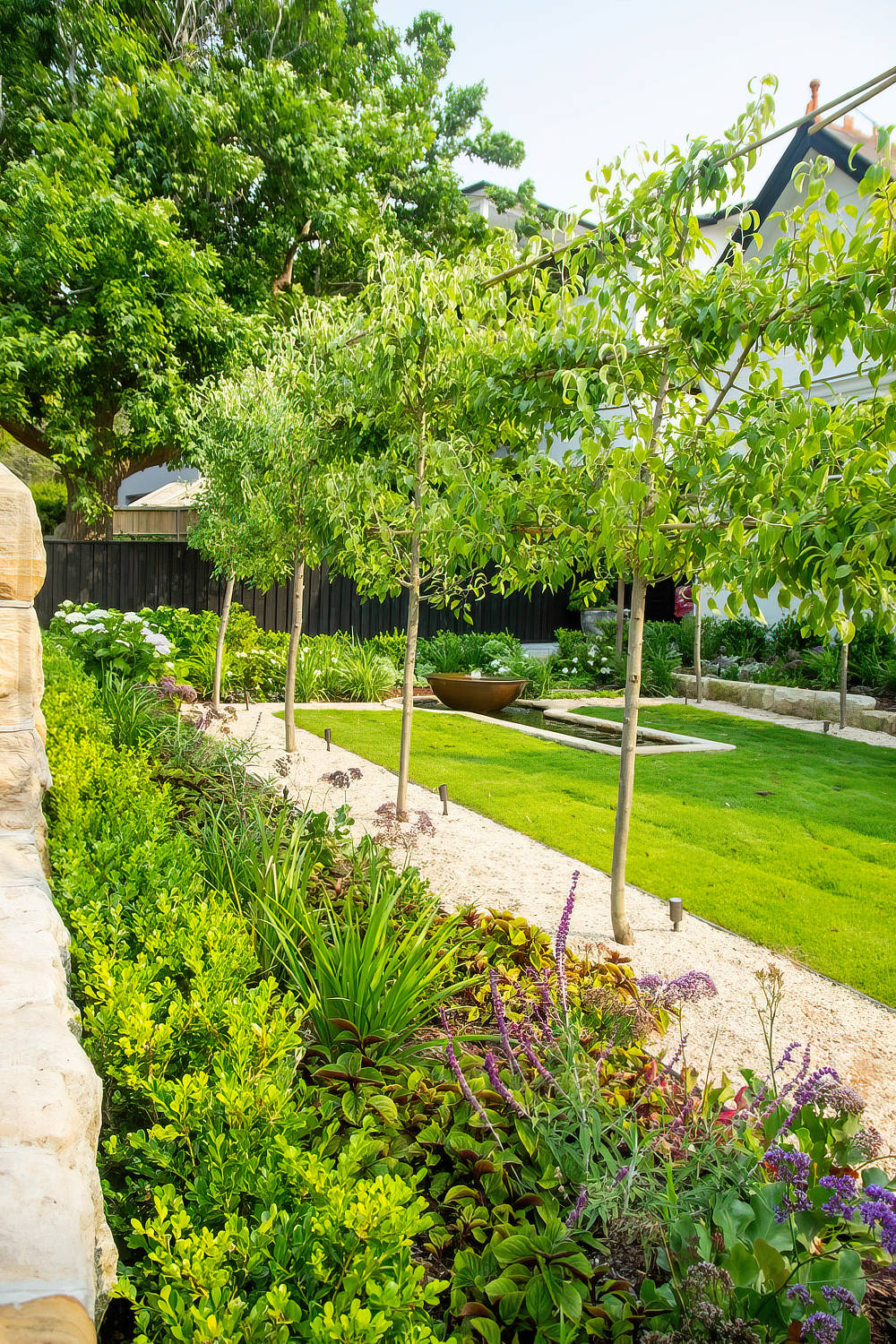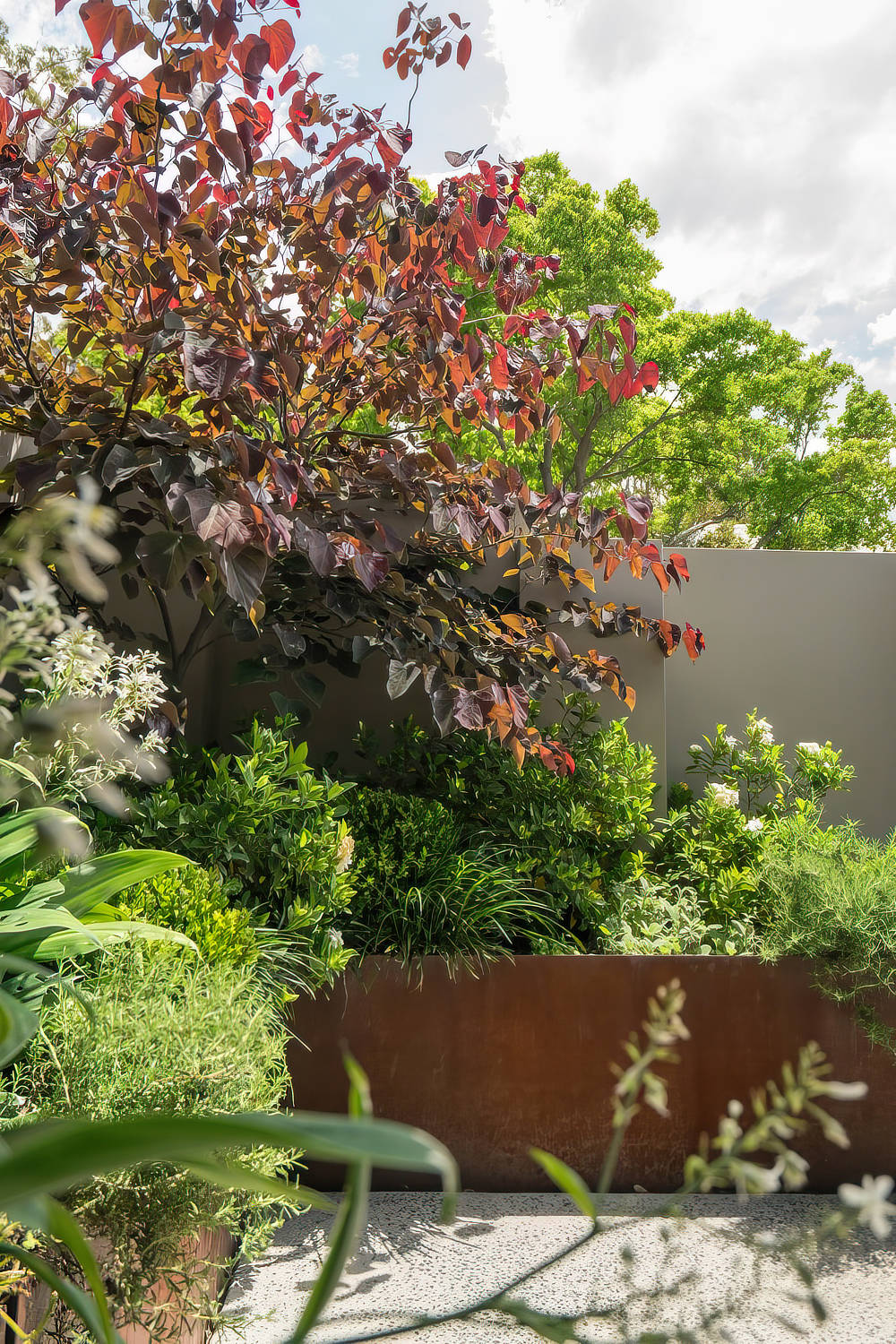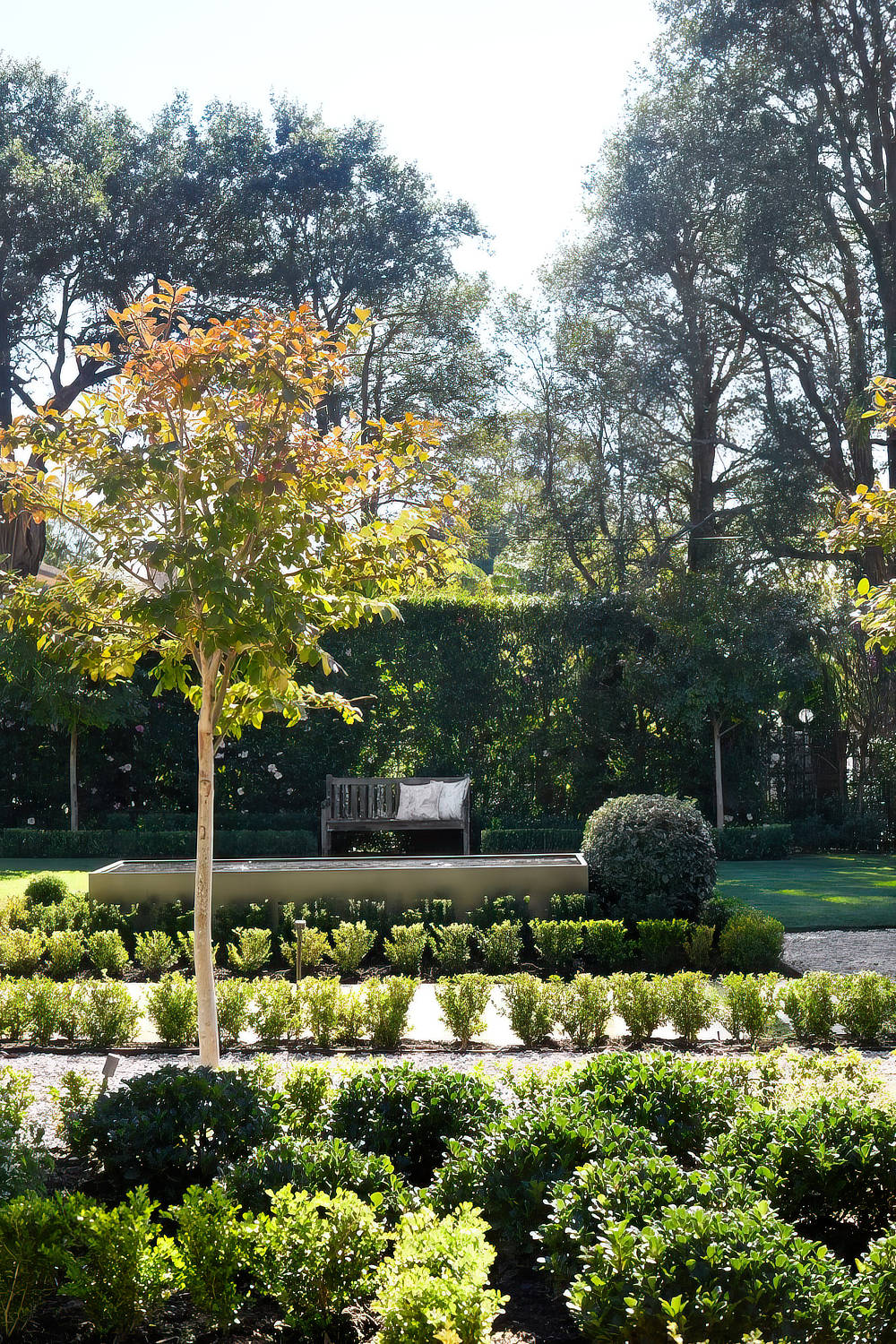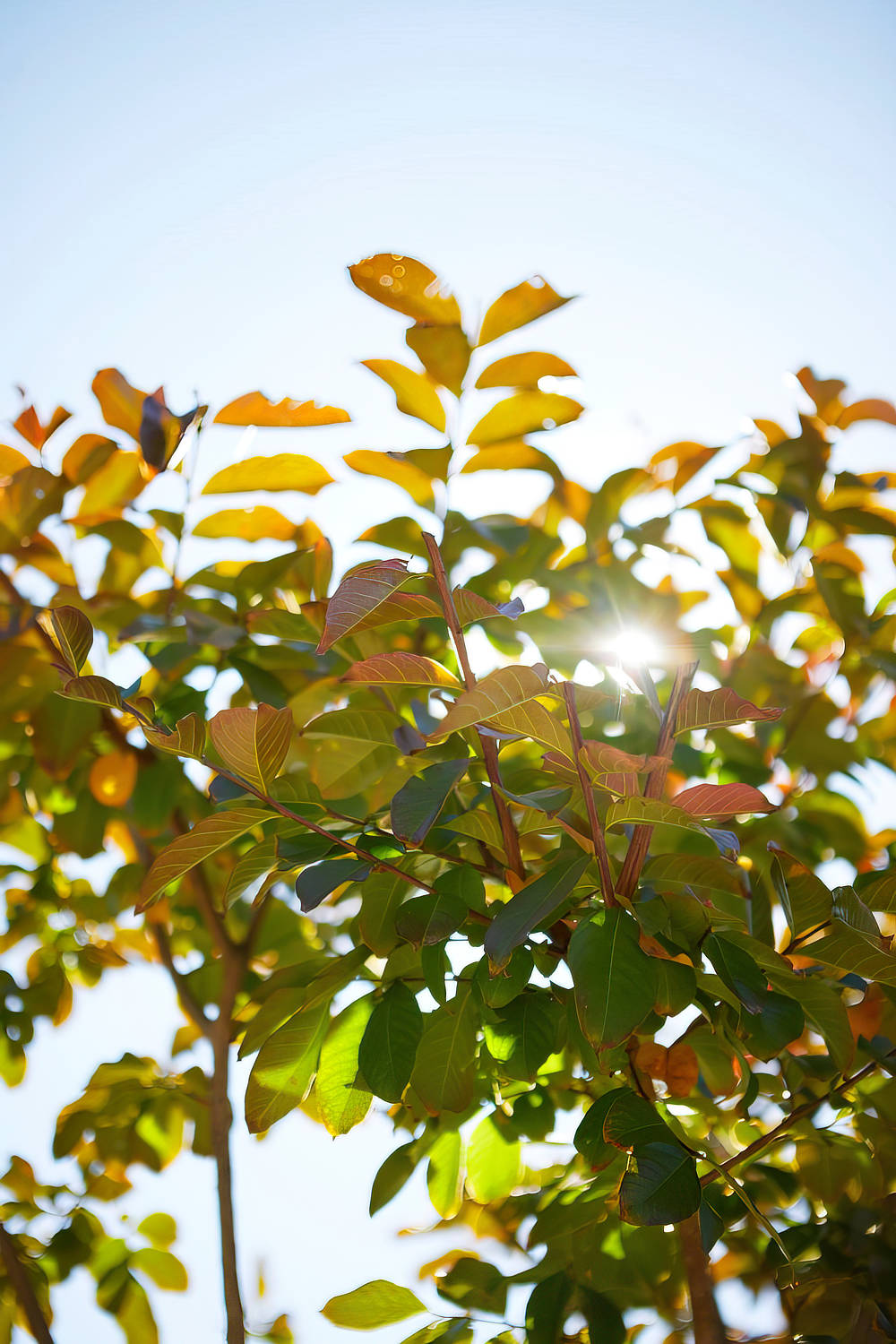Autumn is the only time of the year to enjoy the foliage change that comes with the season in our deciduous trees. Introducing autumn colour into your garden is a lovely way to add interest into your garden all year round as well as the colour change comes protection from the sun in summer yet the warmth from it needed in winter.
For city dwellers one of the best trees for autumn colour whilst being hardy to the climate the rest of the year would have to be the Crepe Myrtle. It can withstand the heat of summer, has good red autumn colour, amazing salmon coloured bark to enjoy in winter and a profusion of flowers in summer. The added bonus of this tree is it contentment to be pruned. By reducing the tree every year to the same spot you create a pollard that throws out new growth, each new shoot will flower and keep the tree a small size – perfect for the city garden.
If you live on a large block the Chinese pistachio is a great option as it will colour up even with the slightest change in temperature. If you live in one of the cooler regions– lucky you at this time of the year, the world is your oyster when it comes to picking autumn colour trees!
A tree is the biggest investment you can make to your landscape and picking the right variety for your conditions is the most important factor when selecting one. When you have decided what tree you are planting and head to the nursery follow these simple steps to ensure you are getting the healthiest and best looking tree for your garden
A happy looking generally healthy tree should draw you to it, it shouldn’t look brown, dead or have curly leaves or branches as this means it is water stressed. When picking an autumn tree now is the only time to do this as you will understand the colour change and the effect this will have on your space. Don’t leave it too late as you want to inspect some of the leaves and check that they don’t have any holes or excessive amounts of pests on them.
The trunk and stems should be free of scars. You don’t want to take home a tree with a previous injury as it wont perform to its best in your garden. The trunk should taper uniformly towards the top and the top leader, the stem pointing straight up to the sky, should be well developed and healthy.
Branches should be uniformly distributed around the trunk, so you won’t get bald spots in the canopy although pick a nice shape to suit your garden and the surrounding plants the tree will sit amongst.
The plant that is growing out of the soil should be in proportion to the pot size – if the pot is too big you’re paying for a small plant that just been potted up and too small and the plant might be root bound. If a plant is in good proportions to the pot it is growing from you can deduce that it has been well cared for and potted up at the right time.
Finally check if there are roots protruding out of the pot and how many there are – you don’t want to get your tree home to find out its root bound or rooted to the ground in the nursery. You can tell by examine the outside of the pot too – if its tight and compacted in there, walk away. When you get your new tree home it’s a good idea to lightly trim with a sharp knife the edge of the root ball as this will stimulate the root behind the cut to throw out new roots, like pruning a branch, and this will help to establish the tree quicker.




